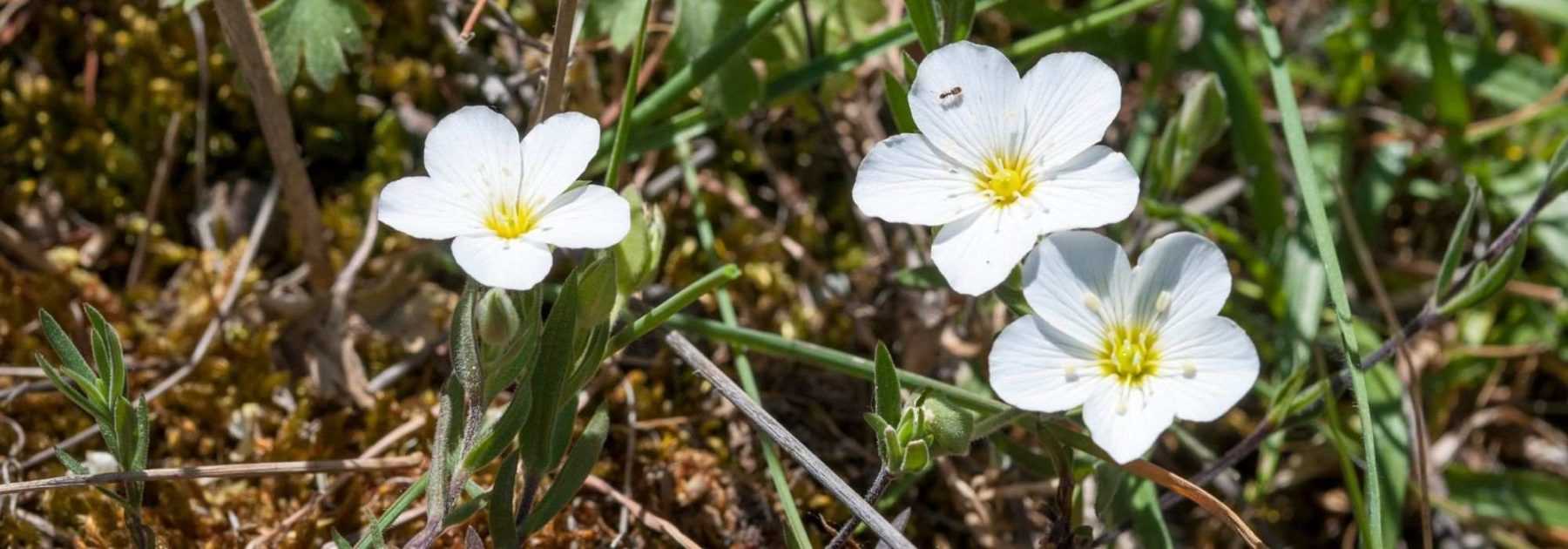
Arenaria, Sandwort: Planting, Growing and Care
Contents
Arenaria in a few words
- Arenaria, or Sandwort, is a carefree evergreen perennial
- It thrives in well-drained, sandy and fresh soil
- It grows in bright but not scorching locations
- Hardy and undemanding, it forms very low green cushions
- Its long white flowering occurs from spring to summer
- This alpine perennial enhances rockeries, borders and containers
Our expert's word
The Arenaria, or Sandwort, is one of those alpine perennials, accustomed to growing at high altitudes, and therefore hardy. An easy-going plant, it forms low cushions of more or less greyish green, covered with small white flowers over a long period, between spring and summer. Evergreen, it remains interesting all year round and asserts its presence when many other plants are dormant. Ideal for rock gardens, it tolerates almost all soils that aren’t too chalky, as long as they are perfectly drained in winter and retain some moisture during the growing season. As it dislikes summer drought and root competition, an open, bright but not scorching position is preferable. It can thus grow in full sun or partial shade depending on the region where it’s cultivated. It’s an excellent choice for rock gardens, edging borders or softening paving. It also performs well when grown in containers.
Description and botany
Botanical data
- Latin name Arenaria
- Family Caryophyllaceae
- Common name Sandwort
- Flowering spring / summer
- Height 10 to 15 cm x 40 cm
- Exposure sun (not scorching), partial shade
- Soil type well-drained, moist, neutral
- Hardiness good (-15°C)
The genus Arenaria belongs to the Caryophyllaceae family, alongside Carnations, Baby’s Breath, Campion, and Soapwort. Primarily native to the Northern Hemisphere, it can be found worldwide, from cold mountainous regions to more temperate zones. Sandwort derives its vernacular name from its preference for free-draining, sandy soils. Etymologically, the word ‘Arena’ also refers to sand. The genus comprises around 160 species of perennial and annual plants, though only a few are used ornamentally. Among these, the most common are Arenaria montana (Mountain Sandwort), Arenaria pungens (Silver Sandwort), Arenaria balearica (Balearic Sandwort), and Arenaria tetraquetra (syn. Arenaria pyrenaica, or Four-ranked Sandwort).
This perennial can occasionally develop a shrubby habit with age under certain growing conditions, but it remains primarily a low-growing, mat-forming ground cover plant. Reaching 10 to 15 centimetres in height, its rootstock produces fine, rooting stems that creep along the soil surface, much like Sweet Violet. Sandwort spreads to around 40 centimetres wide.
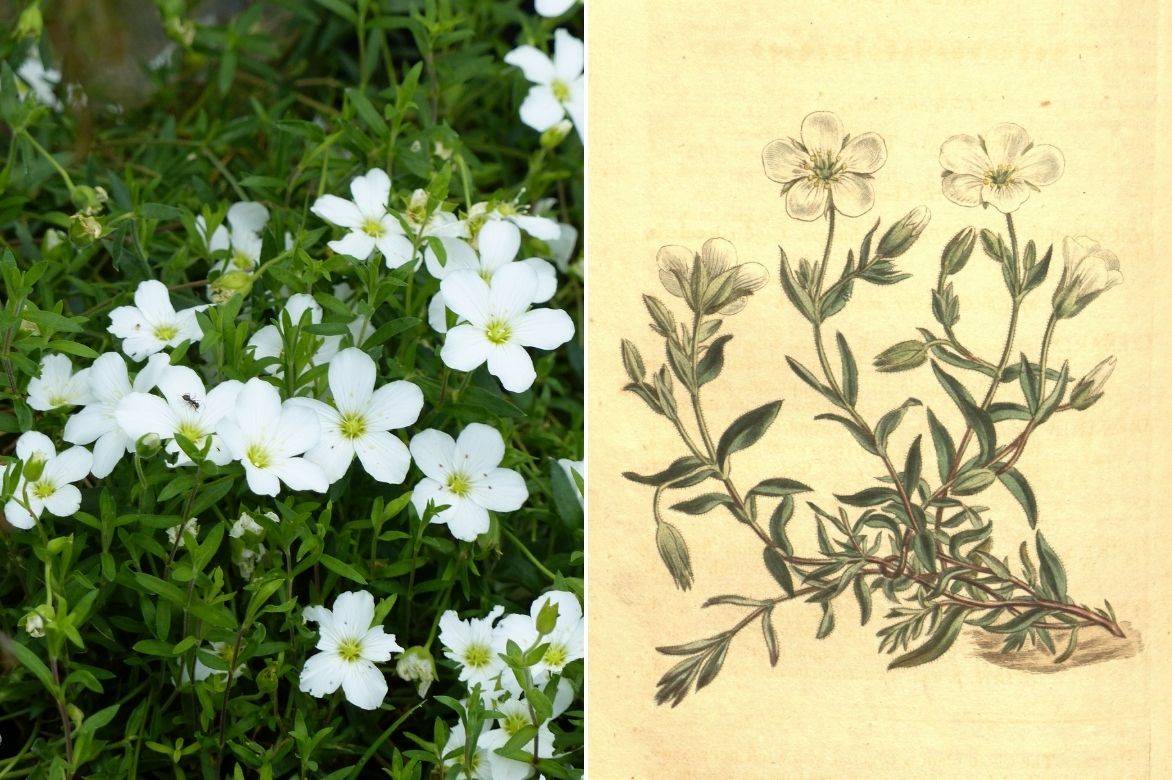
Arenaria montana – Botanical illustration (source Biodiversity Heritage Library – Flickr)
The evergreen foliage consists of tiny, slightly villous leaves, green to grey-green, which may resemble moss. In Arenaria tetraquetra, the leaves overlap curiously, giving it a heather-like appearance. From this dense cushion emerge small five-petalled flowers from spring to summer, appearing singly or in clusters atop short, upright stems, typically white with a greenish-yellow eye. Measuring just a few millimetres in Arenaria balearica, they reach up to 2.5 centimetres in Mountain Sandwort, which boasts the largest corollas proportionally. Flowering is prolonged, lasting over a month. Some species bear violet flowers, like Red Sandwort (Arenaria rubra), an annual used in herbal medicine for its diuretic properties; nicknamed ‘breakstone’, it’s traditionally used in decoctions or infusions to dissolve kidney stones. After flowering, Arenaria produces tiny capsule fruits.

Arenaria foliage varies significantly by species: Arenaria tetraquetra ssp granatensis (photo Ghislain118), Arenaria montana (photo Mtiffany71 – Wikimedia) and Arenaria pungens (photo Römert – Wikimedia)
Exceptionally floriferous and very hardy (-15°C and beyond), Arenaria is a perennial that’s extremely easy to grow and disease-free. Its origins make it ideal for sunny to partially shaded positions in any moist but well-drained soil. It’s perfect for embellishing cool rockeries, greening moderately dry walls, decorating the front of borders, or filling gaps between paving stones. It also works well in container displays or trough plantings. However, in overly arid conditions, its survival chances are poor.
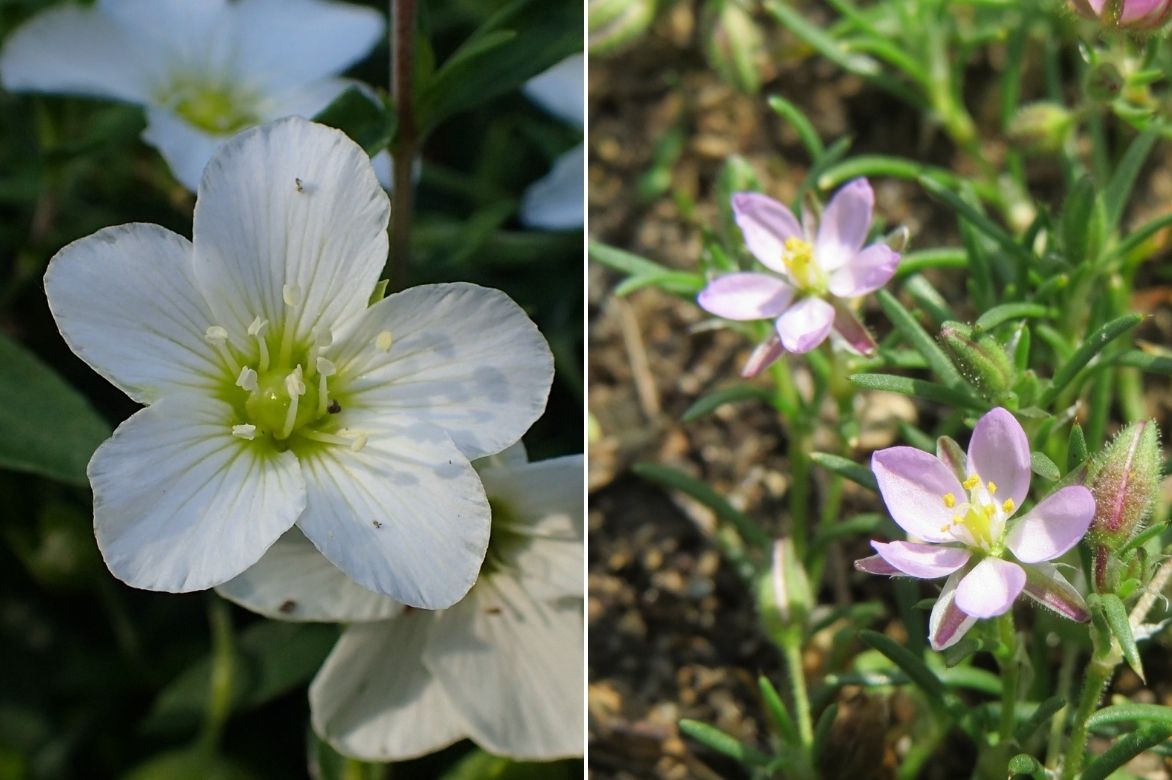
Arenaria montana (photo Kenraiz – Wikimedia) and Arenaria rubra (photo AnRo0002 – Wikimedia)
The different species
[product sku=”805821″ blog_description=”Mountain Sandwort forms a greyish-green evergreen cushion, covered with white flowers from late spring to early summer. A hardy and carefree rockery young plant!” template=”listing1″ /]
[product sku=”8626″ blog_description=”The curious imbricate foliage of Four-Rank Sandwort is original and decorative. A low-growing groundcover adorned with white flowers.” template=”listing1″ /]
[product sku=”8627″ blog_description=”A variety of Four-Rank Sandwort, forming dense tapetums covered with white flowers.” template=”listing1″ /]
Discover other Arenaria
View all →Available in 2 sizes
Available in 1 sizes
Available in 1 sizes
Planting
Where to Plant Sandwort
The Arenaria is a mountain plant. It is hardy and suitable for many gardens. While it does not tolerate very dry and hot conditions, ensure it has a bright location. In northern regions, you can place it in full sun; further south, partial shade is more suitable. In any case, a soil that retains good moisture in season but where water does not stagnate is key to success. It accepts all types of soil that are not too rich or too chalky.
Sandwort is one of those alpine perennials that thrive in cool rock gardens. It can also edge a low wall, decorate a flower bed border, or nestle between paving stones to soften the hardscape. For gardeners with only a balcony or terrace, growing it in pots yields excellent results. Give it space to develop well, avoiding excessive root competition with neighbouring plants.
When to Plant Sandwort?
In regions with cold, wet winters, prioritise early spring for planting your Sandwort. In milder climates, you can also consider planting it in early autumn.
How to Plant Sandwort?
- Dig a hole 2 to 3 times the size of the root ball and loosen the soil.
- In heavy soil, improve drainage by adding coarse sand, gravel, or volcanic rock.
- After thoroughly soaking the root ball by letting it sit in a bucket of water while preparing the soil, place your young plant in the desired spot.
- Fill in with the remaining substrate and lightly firm the soil.
- Water generously to ensure good contact between the soil and roots.
- Mulch, preferably with a mineral mulch (gravel, sand, etc.), to prevent water stagnation at the collar (junction between above-ground and underground parts).
- Keep the soil moist but not waterlogged during the first few months. Adjust care according to weather conditions.
In pots, place a drainage layer at the bottom of the container (gravel, clay pebbles, etc.) and use a light, well-draining, and not overly rich substrate, such as potting mix blended with coarse sand.
Maintenance
The Arenaria is a perennial that requires very little maintenance, especially if planted in well-draining, moist soil and in a position that isn’t too arid. Occasional watering may be necessary if rainfall is insufficient, but be careful not to drown your young plant. Wait until the substrate dries slightly before intervening. Excess water can indeed cause the roots to rot.
Once flowering has finished, and although pruning is optional, you can cut the plant back quite severely to maintain a dense, compact habit. It will then produce fresh foliage that remains decorative throughout the rest of the year.
Propagation
The simplest method to propagate Arenaria is division of clumps, which is carried out in early spring.
- Using a spade, lift the young plant from the ground, taking care to keep as much root and soil as possible.
- Divide your plant into several sections, either by cutting it with your spade or using a sharp knife.
- Replant immediately the divided sections in the chosen location.
- Water and mulch.
Pairing Arenaria in the Garden
Alpine perennial hardy, Arenaria creates low-growing, luminous tapestries, beautifully punctuating a rock garden.
Pair it with other perennials for well-drained soil, such as Saxifrages, Aubrietas, Alyssums, Arabis or even subulate Pearlworts. Columbines add beautiful natural splashes of colour that rhythmically enhance the border, much like the Mountain Cornflower with its very dark violet, almost black corollas, ensuring striking contrasts. The blue of the Willow Gentian adds lovely depth, though it’s somewhat more demanding to grow. The Edelweiss transports you to the steep Alpine slopes, standing out for its originality and rarity.
In late winter and early spring, numerous early-flowering bulbs (Crocus, Chionodoxa, Cyclamen coum, Daffodils and botanical Tulips…) awaken the scene with cheerfulness.
Arenaria also creates a perfect setting for taller, upright perennials, such as Caucasian Speedwell or the tall White Willowherb.
It can also form a tapetum against which the structural silhouettes of bushes stand out. Among rock garden conifers, the upright Japanese Plum Yew or the more compact Dwarf Mountain Pine ‘Mughus’ make excellent candidates. You could also opt for leafy shrubs like Abelias and California Lilacs (in milder climates), Barberries, Heathers or certain Cotoneasters.
Finally, to add grace and movement, consider ornamental grasses. Whether deciduous or evergreen, they sway in the wind and energise your compositions.
Useful resources
–> Our different species and varieties of Sandwort.
–> Discover the world of alpine perennials!
–> Rockery conifers, structural and evergreen bushes.
- Subscribe!
- Contents


































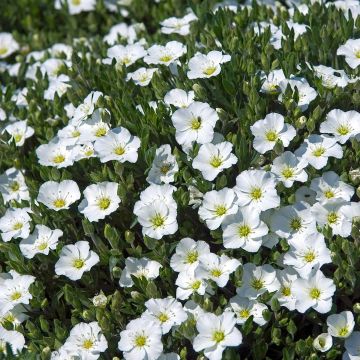
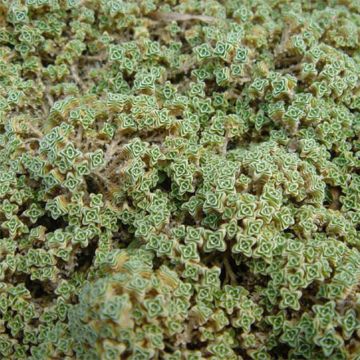
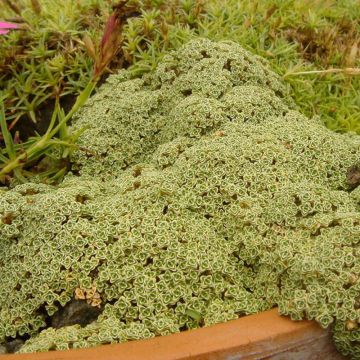
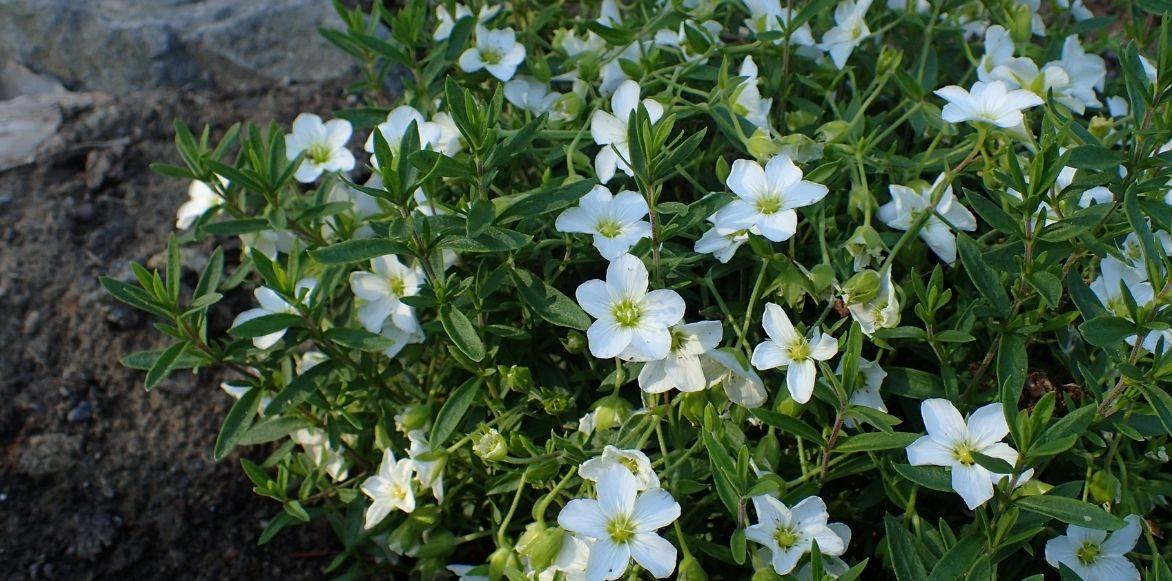
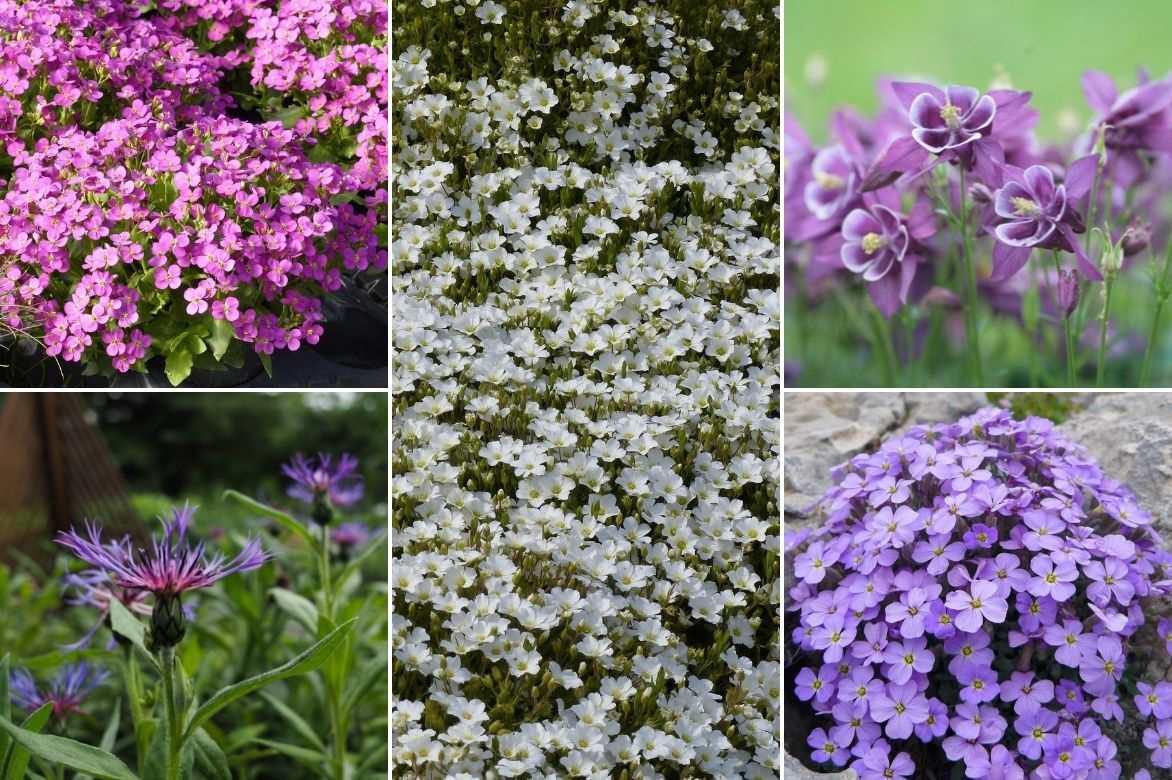
Comments